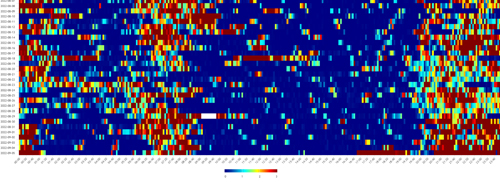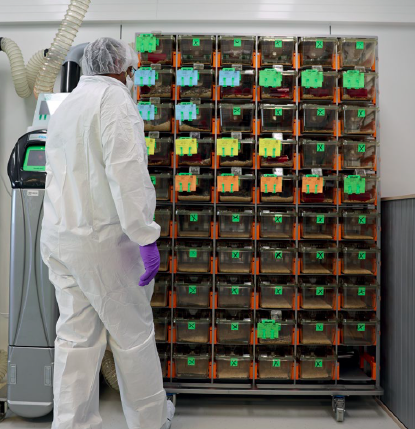Watching over mice 24/7
In 2022, the rodent platform of the Luxembourg Centre for Systems Biomedicine (LCSB) of the University of Luxembourg invested in cages with an automated monitoring system. They allow for real-time tracking of mice without any interference with the animals’ routine. This new piece of equipment will contribute to research, optimise facility management and improve animal welfare.
The new cage rack installed over the summer has quite an array of functionalities. It holds 80 cages outfitted with 12 electrodes each. These sensors can monitor the animals’ movement around the clock. The system also tracks key parameters such as food and water levels. “With these cages, mice don’t have to be moved or require a chip, which is a huge advantage,” details Prof. Evan Williams, head of the Gene Expression & Metabolism group at the LCSB. “This way, we can collect data 24/7 without disturbing them.” This will be especially useful to study how specific diseases, such as neurodegenerative disorders for example, affect mobility.
The sensors use electromagnetic field technology. They detect movement based on changes in conductance as the animal passes over them. It is now possible to conduct experiments without the animals ever having to leave the security of their cage. As a result, the researchers hope to reduce experimental variability caused by stress and improve reproducibility. The automation should also help to decrease bias linked to human interventions. The data obtained will open new possibilities for research but this is not the only advantage of this novel system.

Heat map representing the activity of a mouse over time for several days. Each line represents a 24h period. Each pixel corresponds to 5 minutes of data. Blue means less movement. Red means more movement.
Dr. Djalil Coowar, manager of the rodent platform, supervised its installation. He explains: “Any interference with the animals’ routine can have a lasting impact on their behaviour. By reducing human interaction to a minimum, these cages enhance animal welfare and help our facility to optimise protocols.” As an example, any anormal decrease in locomotion will be detected, allowing the technicians to identify a sick mouse faster. As the sensors measure the humidity level in each cage, they will also ensure that the bedding is only changed when needed. With no unnecessary handling, this system reduces running costs – less consumables are required and the workload can be streamlined – but most of all, it is beneficial for the animals.
